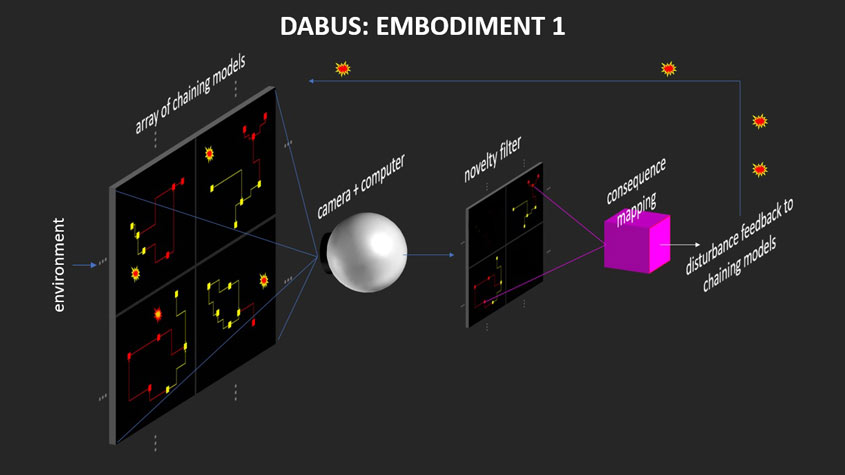
In the Courts: Australian Court finds AI systems can be “inventors”
By Rebecca Currey & Jane Owen, Bird & Bird, Sydney, Australia
In a world first, a judge of the Federal Court of Australia has found that artificial intelligence (AI) is capable of being an “inventor” for the purposes of the Australian patent regime.
This is one more chapter in the global debate as to whether patent law and policy should adapt to recognize the changing innovation landscape. This decision is one of a series of test cases globally regarding the effect of AI “inventors” on the current state of patent law in certain jurisdictions.
The confirmation that, in Australia, AI can be “inventors” under our existing regime (subject to any appeal decision) is contrary to the position in the UK, the European Patent Office (EPO) and the USA, where an inventor must be a natural person.
Background
An AI system, known as DABUS (or Device for the Autonomous Bootstrapping of Unified Sentience), had been named as the inventor by the Applicant, Dr. Stephen Thaler, on an international application filed under the Patent Cooperation Treaty, designating Australia. The alleged invention was the output of DABUS’ various products and methods directed at an improved fractal container, which claims to be an “improved food container for foods.”

DABUS had been named as the inventor because the Patent Regulations require, in relation to a PCT Application, the Applicant to name the “inventor of the invention to which the application relates”.
The Deputy Commissioner of Patents (“Commissioner”) had rejected the application because it did not name a human inventor. The Commissioner was of the view that the ordinary meaning of “inventor” (which is not defined in the Patents Act) was “inherently human,” and that naming AI as the inventor was incompatible with section 15 of the Patents Act, which provides that a patent for an invention may only be granted to a person who:
- is the inventor; or
- would, on the grant of a patent for the invention, be entitled to have the patent assigned to the person; or
- derives title to the invention from the inventor or a person mentioned in paragraph (b); or
- is the legal representative of a deceased person mentioned in paragraph (a), (b) or (c).
In particular, the Commissioner said that in relation to:
- section 15(1)(b) “[i]t is an uncontroversial observation that the law does not presently recognise the capacity of an artificial intelligence machine to assign property”;
- section 15(1)(c), an artificial intelligence could not have any beneficial interest in property, and requires a title that moves from the inventor to another person, which on the facts, does not exist here.
Dr. Thaler sought judicial review of the Commissioner’s decision.
In a world first, a judge of the Federal Court of Australia has found that artificial intelligence is capable of being an inventor’ for the purposes of the Australian patent regime.
The decision
Justice Beach found that there was “no specific provision [in the Patents Act] that expressly refutes the proposition that an artificial intelligence system can be an inventor”, and in such circumstances, AI can be an inventor.
While the Commissioner of Patents sought to emphasize the dictionary definitions of “inventor” (given that “inventor” is not defined in the Act), Justice Beach was not persuaded. He said, having regard to the evolving nature of patentable inventions and their creators that, rather than “resort to old millennium usages of that word, … [he] need[ed] to grapple with the underlying idea, recognizing the evolving nature of patentable inventions and their creators. We are both created and create. Why cannot our own creations also create?”
To this end, Justice Beach acknowledged the extensive role of AI in pharmaceutical research, as an example of its inventive and technical contribution, which indicated that a narrow view of “inventor” should not be taken. While, like “computer,” an inventor, is an agent noun (and an agent can be a person or a thing) that may have originally only been used to describe humans, when only humans could make inventions, the term is now apt to describe machines that carry out the same function, he said.

In such circumstances, there is no basis to exclude AI from being an “inventor” within the meaning of the Patents Act, or to “preclude a class of otherwise patentable inventions from patentability on the basis of an exclusion that is not apparent from the express words of the Act. Indeed, that would be the antithesis of promoting innovation”.
As to the Commissioner’s arguments pertaining to section 15 of the Act, which outlines who may be granted a patent, Justice Beach said that he found the Commissioner’s reliance on this section “curious”, because the application was only at the formalities stage, which simply required that the “inventor” be named, and was nowhere near the stage of grant.
Regardless, Justice Beach considered section 15 of the Act. He said that, in principle, Dr. Thaler is capable of being entitled to be granted a patent in relation to an invention made by AI such as DABUS under at least sections 15(1)(c) and possibly section 15(1)(b).
This decision is one more chapter in the global debate as to whether patent law and policy should adapt to recognize the changing innovation landscape.
As to section 15(1)(b), Justice Beach said that Dr. Thaler could bring himself within section 15(1)(b). He said that this section deals with a future conditional, and that it does not require the existence of an inventor at all – all that is required is that he is entitled to have the patent assigned to him in the event there is a grant.
Turning to section 15(1)(c), he said that first impressions suggested that Dr. Thaler fell within this section, because he has derived title to the invention from DABUS. Despite the fact that DABUS is not a legal person that cannot legally assign the invention, title can still be derived from DABUS by reason of his possession of DABUS, his ownership of the copyright in the source code of DABUS, and his ownership and possession of the computer on which it resides.
Given the global significance of this issue and the contrary position of the Australian Federal Court to other courts around the world, we await with interest the outcome of the appeal submitted by the Australian Commissioner of Patents on August 30, 2021.
The WIPO Magazine is intended to help broaden public understanding of intellectual property and of WIPO’s work, and is not an official document of WIPO. The designations employed and the presentation of material throughout this publication do not imply the expression of any opinion whatsoever on the part of WIPO concerning the legal status of any country, territory or area or of its authorities, or concerning the delimitation of its frontiers or boundaries. This publication is not intended to reflect the views of the Member States or the WIPO Secretariat. The mention of specific companies or products of manufacturers does not imply that they are endorsed or recommended by WIPO in preference to others of a similar nature that are not mentioned.